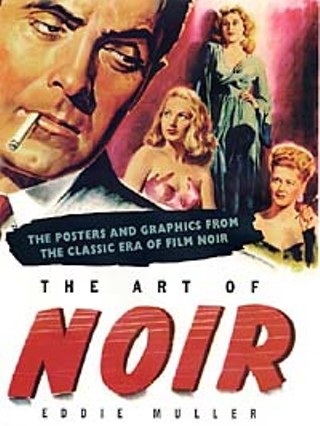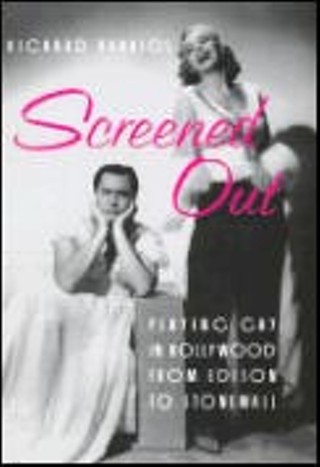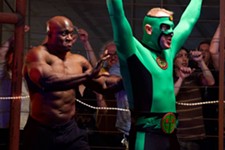Page-Turners
Fri., Dec. 6, 2002

Film Posters of the 40s: The Essential Movies of the Decade
Tony Nourmand and Graham Marsh, eds.Overlook Press, 127 pp., $35
The Art of Noir: The Posters and Graphics From the Classic Era of Film Noir
by Eddie MullerOverlook Press, 370 pp., $50
Overlook Press has issued several terrific collections of movie poster art in coffeetable-sized editions, and their two most recent outings in the field are stunning examples of classic and obscure film one-sheets and are downright classy to boot. Both are printed on heavy-gloss stock paper (the Noir volume alone weighs in at several pounds) and contain mini-essays, running commentary, and scads of little-known trivia tidbits. Muller's massive volume is notable in that it covers not just the known (Nicholas Ray's In a Lonely Place, for example) but also the obscure (Monogram's I Wouldn't Be in Your Shoes) and the foreign (such as a swell Japanese poster for Gun Crazy). And as for the film posters of the Forties, you couldn't ask for a better collection -- Nourmand, who runs London's Reel Poster Gallery, has clearly made this a labor of love, including the classics (Carol Reed's The Third Man), the near-classics (I Walked With a Zombie), and the outright nifty (including a "Wanted" poster for wartime scourge Adolf Hitler). There are also reams of rare European versions of Capra and Welles greats and even some "News on Parade" advertising that makes you wonder why they quit doing newsreels in the first place. CNN just isn't the same. -- Marc Savlov

A Third Face: My Tale of Writing, Fighting, and Filmmaking
by Samuel Fuller, with Jerome Rudes and Christa Lang FullerAlfred A. Knopf, 576 pp., $35
Longtime readers of the Chronicle are well aware of some of our writers' passionate attachment to the films of Sam Fuller. This American maverick made movies that were honest, contradictory, challenging, and original. His films are recognizable by their gut-punching impact and, always, by Fuller's unerring ability to tell one hell of a compelling yarn. (If you need a Fuller refresher, read Martin Scorsese's two-page summary of the director's work in his introduction to A Third Face. It's as good an overview as you're ever likely to find.) Fuller's gift for spinning tales is fully captured in A Third Face. As Fuller tells the amazing stories that makeup his life, the sound of his distinctive, gruff voice can be heard on every page, though one suspects the language has been somewhat sanitized for publication. Although these reminiscences make a wonderful treasure, readers should be aware that the book was assembled posthumously by his wife, Christa Lange Fuller, and friend Jerome Rudes from audio tapes made by Fuller during his last years. There is a cut-and-paste quality to the tales, many of which have been heard before in other presentations and interviews. Marred by some sloppy editing and some obvious exclusions of certain subject matter, A Third Face (Fuller's term for his inner self) is still the best tome on this filmmaker out there. For the photos alone, A Third Face is a welcome addition to the Fuller canon. -- Marjorie Baumgarten

Screened Out: Playing Gay in Hollywood From Edison to Stonewall
by Richard BarriosRoutledge, 320 pp., $29.95
A lighter cousin to Vito Russo's groundbreaking The Celluloid Closet, this chronicle of gays and lesbians (fictional and real) in Hollywood is exhaustive and well-researched, as well as a compulsively fun read. Barrios is not an academic, but his exploration is thorough, and his expression is wry (Bugs Bunny is "the magnificent androgyne") and dishy (Cecil Cunningham's voice is "an extra-dry martini spilled onto a piece of parchment"). The book's thesis -- that gays and lesbians have appeared in coded representations since the advent of the cinema and should be considered in context -- is largely optimistic. Barrios celebrates the noncensorious "pansy craze" of pre-Code Hollywood and discovers winking "insider" references in such unlikely sources as Betty Boop cartoons. Not every reader may embrace these caricatures, but Barrios reclaims them convincingly, with a wealth of primary sources (such as memos from studio moguls) and illustrations that document the strange history of the queer image. -- Marrit Ingman








